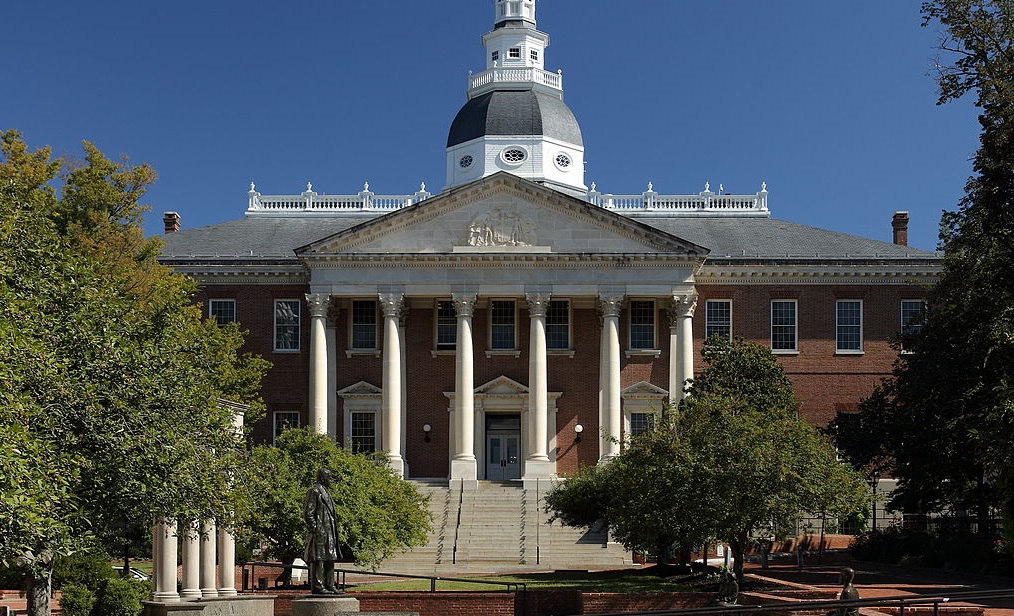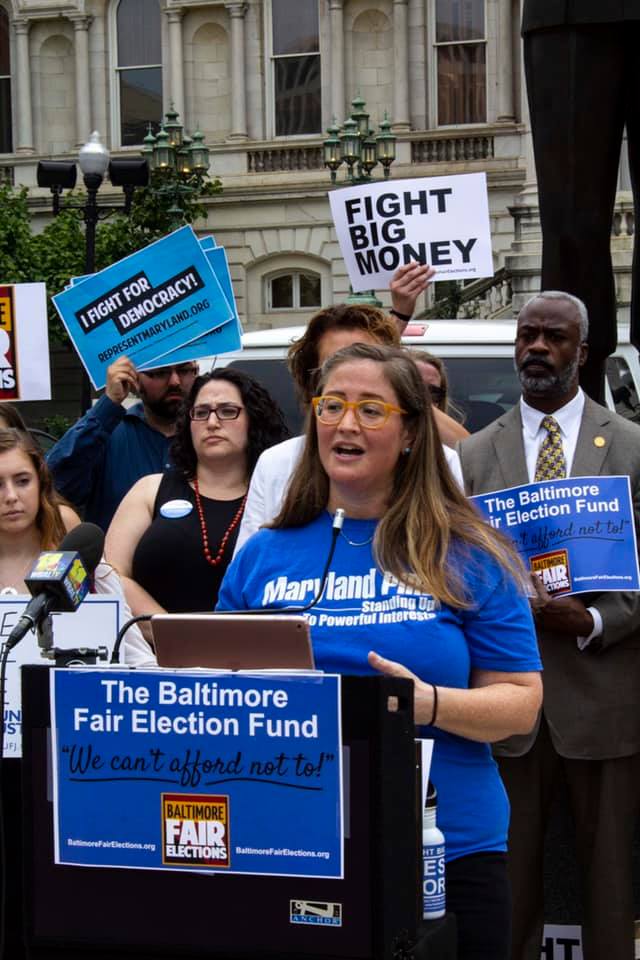
Fair Elections in Maryland Counties
Matching Program for Counties Continues to Deliver
Maryland fair elections programs are encouraging greater participation, and reducing the influence of large donors in Maryland elections.

Downloads
This report on Fair Election in Maryland Counties is an update on our 2018 report, Fair Elections in Montgomery County.
Report Summary: Fair Elections in Maryland Counties
Maryland’s elections, like elections across the United States, are often dominated by big money – the large donations that come from a small pool of mega-donors and special interests.
When big money dominates politics, it shapes everything from who decides to run for office to a candidate’s ability to communicate their message to the public. Traditional campaign financing favors those with money and access, and people of color, women, low-income folks, young people, and immigrants are often left out.
In some places this dynamic is starting to change through systems of small donor public financing. In Maryland, counties as diverse as Montgomery County, Howard County, Baltimore City, Baltimore County, Prince George’s County, and Anne Arundel County have all passed similar laws to establish these programs, and for the 2022 election cycle both Montgomery County and Howard County operated small donor public campaign financing programs. Other programs are expected to come online for the 2024 or 2026 election cycles.
The programs in Montgomery County and Howard County provide candidates for county-level positions with limited matching funds if they agree to accept contributions only from small donors. These programs are available for candidates regardless of political affiliation and have been used by candidates from both major political parties in 2018 and 2022. The goals of these programs include encouraging greater participation, reducing the influence of large donors, and enabling more residents to be able to run for public office.
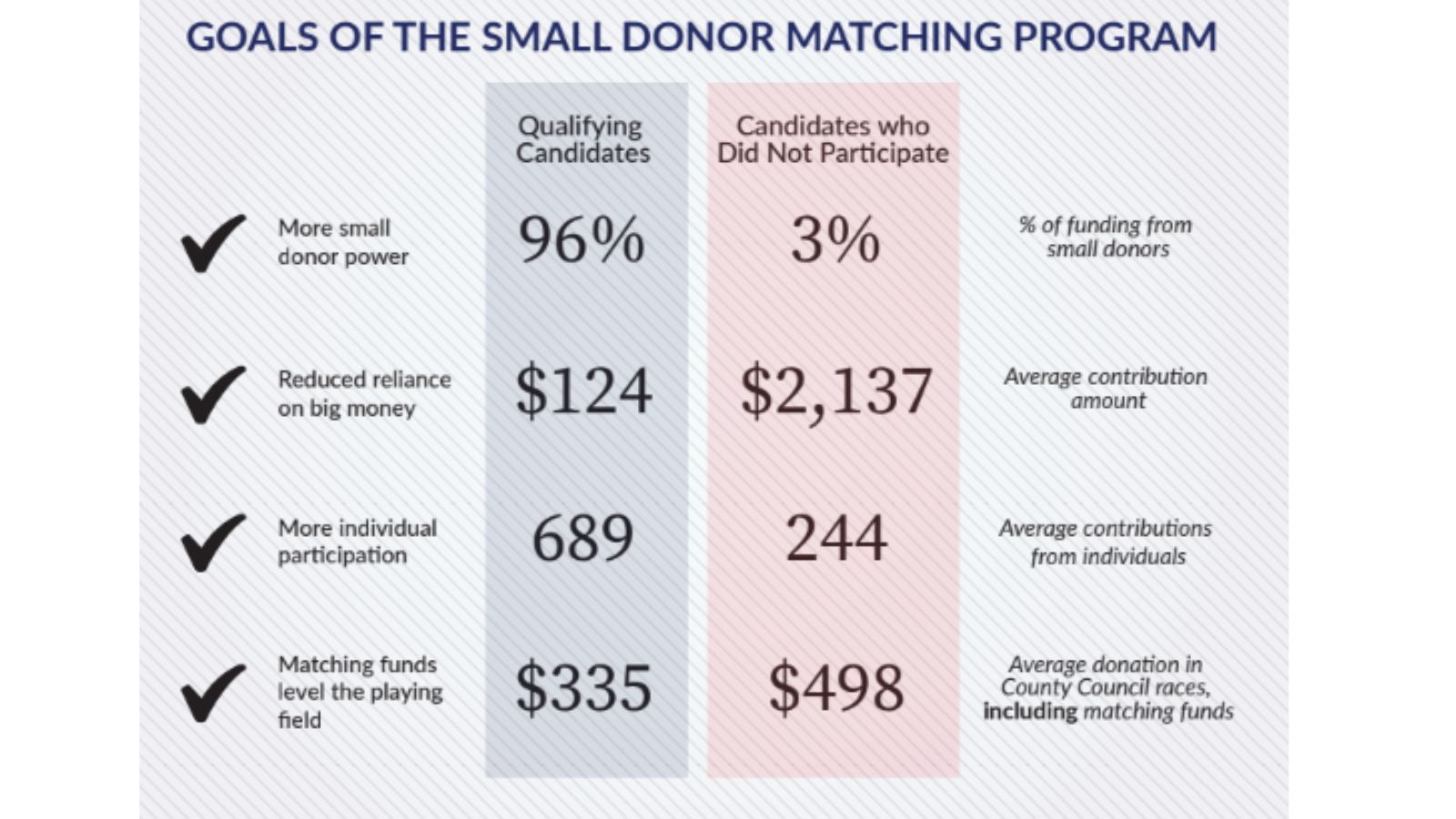
Our review of the 2022 data finds that:
- The small donor matching program elevates the role of small donors. Candidates who qualified for the program funded their campaigns almost completely through small donations and matching funds, while non-participating candidates received a much lower percentage of funds from small donations.
- Small donors provided 96% of the funding for qualified candidates in Montgomery County, while only providing 2% of funding to candidates who did not participate in the program
- Small donors provided 97% of the funding for qualified candidates in Howard County, while only providing 8% of the funding to candidates who did not participate in the program.
- In aggregate across both counties, small donors provided 96% of funding to participating candidates, while only providing 3% of funding to candidates who did not participate in the matching program.
- In 2022, as in 2018, the average donation was dramatically smaller for qualifying candidates than for candidates who did not participate in the matching program. This was true in both Montgomery County and Howard County.
- In Montgomery County, candidates qualifying for the small donor matching program received an average donation of $120 from their contributors. For candidates who did not participate, the average contribution was $2,948.
- In Howard County, candidates who qualified for the program received an average contribution of $139 while candidates who did not participate received an average donation of $778.
- In aggregate across both counties, qualifying candidates received an average contribution of $124 while the average contribution for non-participating candidates was $2,137.
- Individual donors participate at a higher rate when candidates use the small donor matching program.
- In Montgomery County, qualifying candidates received on average 228% more contributions from individuals than candidates who did not participate. (701 vs 214).
- In Howard County, qualifying candidates received on average 94% more contributions from individuals than candidates who did not participate (641 vs 331)
- In aggregate across both counties, qualifying candidates received on average 186% more contributions from individuals than candidates who did not participate (698 vs 244).
- Qualifying candidates are able to successfully use the matching program to compete on much more equal footing with candidates using traditional financing.
- Candidates for all Montgomery County offices who qualified for the program more than tripled their average contribution from $120 to $396 using matching funds. In the County Executive race, qualifying candidates increased their average contribution from $144 to $523.
- Candidates for all Howard County offices nearly tripled their average contribution using matching funds, from $139 to $414.
- In County Council races in both counties, the average total contribution for qualifying candidates was $335 compared to $498 for non-participating candidates. By increasing the number of individual donors, qualifying candidates in these races were actually able to raise more money in total and on average per candidate than non-participating candidates.
These results demonstrate that as small donor matching programs expand to other counties and as counties gain more experience with their own programs, these programs continue to work as intended.
Related reeports
Big Money in Baltimore’s 2020 Elections
Big Money in Maryland Elections
Fair Elections in Montgomery County
Topics
Authors
Emily Scarr
State Director, Maryland PIRG Foundation
Emily directs strategy, organizational development, research, communications and legislative advocacy for Maryland PIRG. Recently, Emily helped win small donor public financing in Montgomery and Howard counties, and the Maryland Keep Antibiotics Effective Act to protect public health by restricting the use of antibiotics on Maryland farms. Emily also serves on the Executive Committees of the Maryland Fair Elections Coalition and the Maryland Campaign to Keep Antibiotics Working, and the Steering Committees for the Maryland Pesticide Action Network and Marylanders for Open Government. Emily lives in Baltimore with her husband and dog.
Find Out More
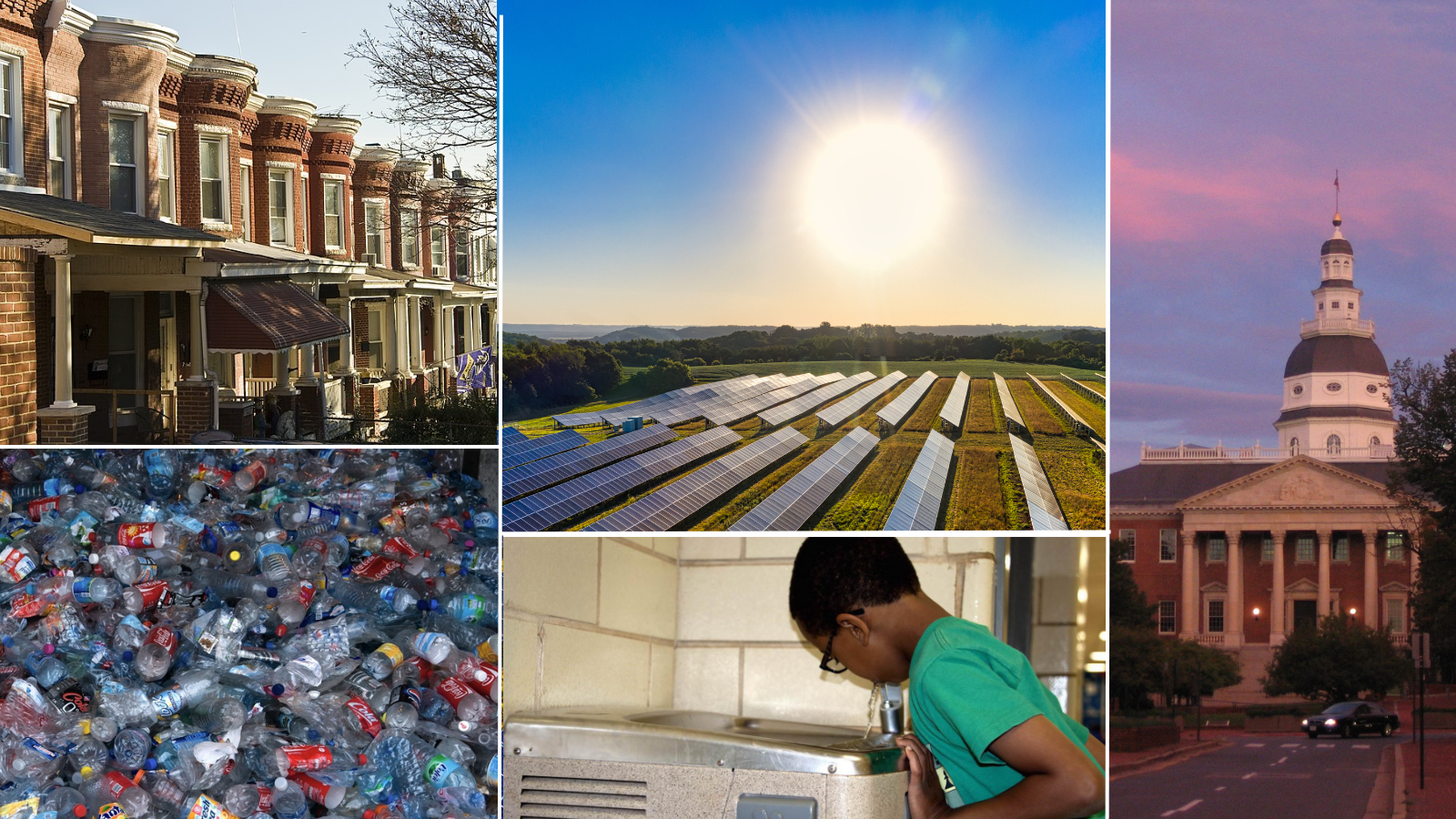
Our 2023 Legislative Agenda and Priorities
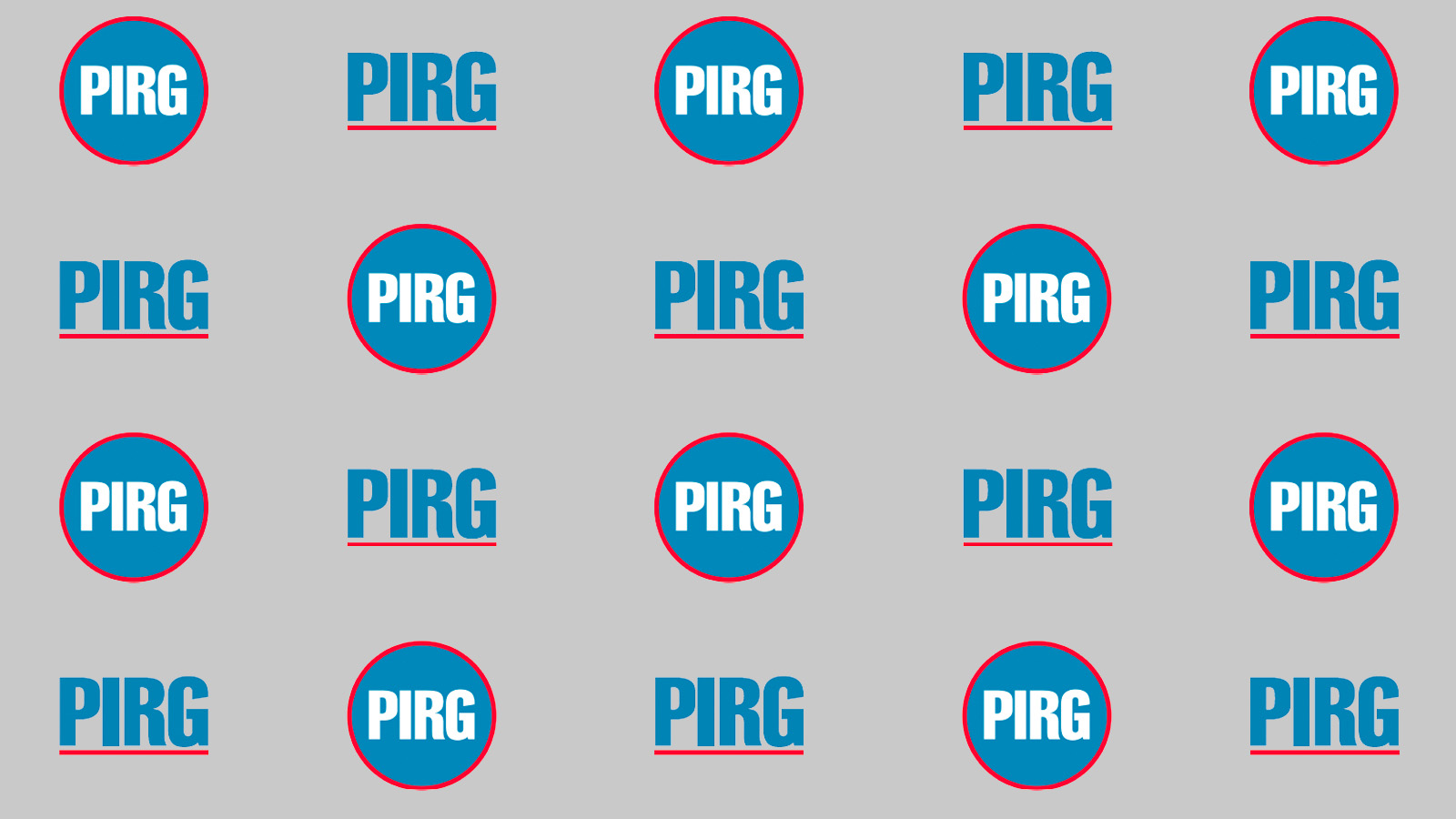
Testimony: Local Public Campaign Financing – Expansion to Additional Offices

Maryland PIRG 2022 Legislative Agenda
